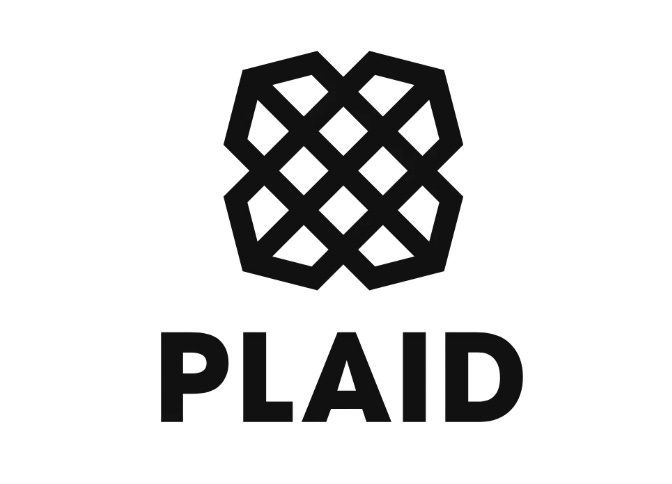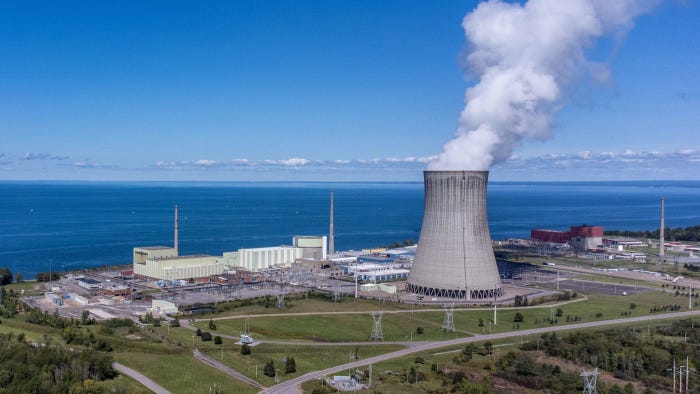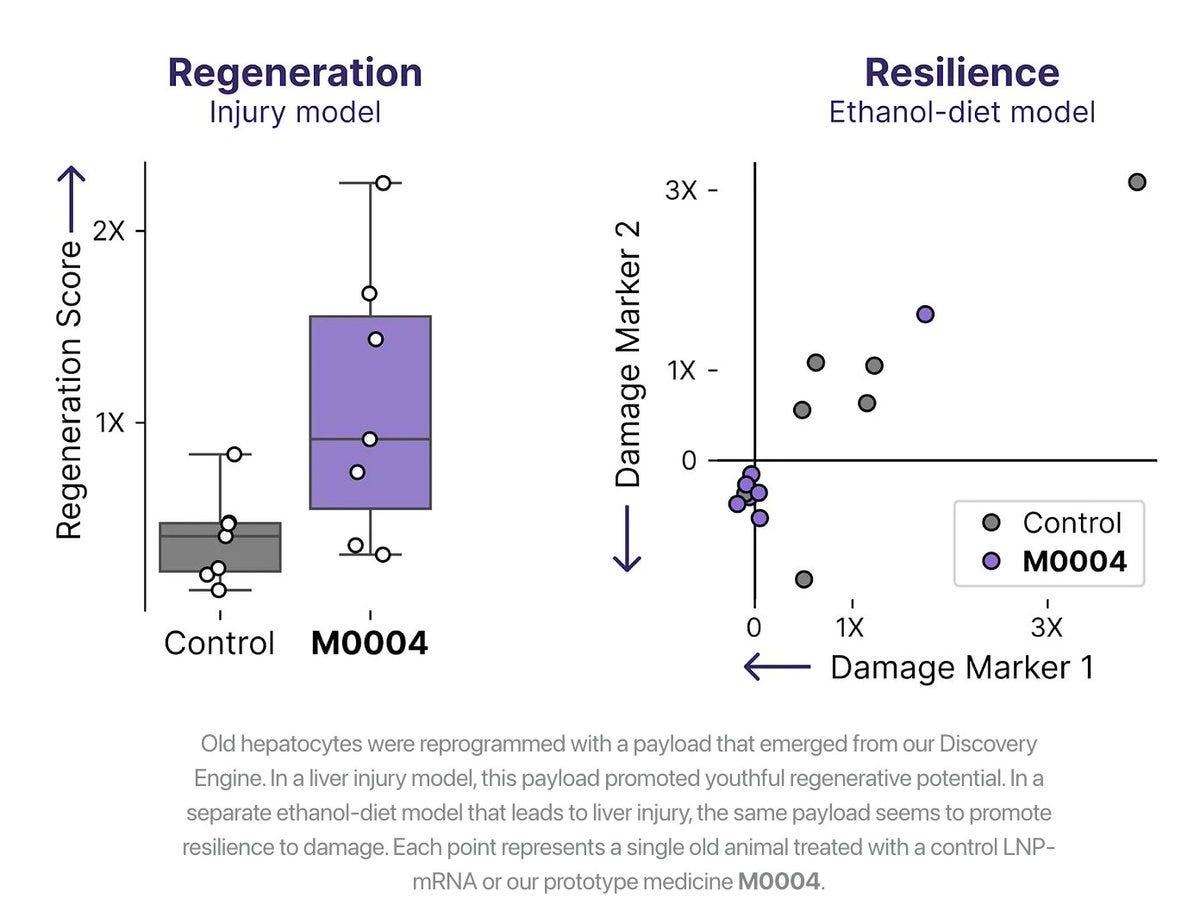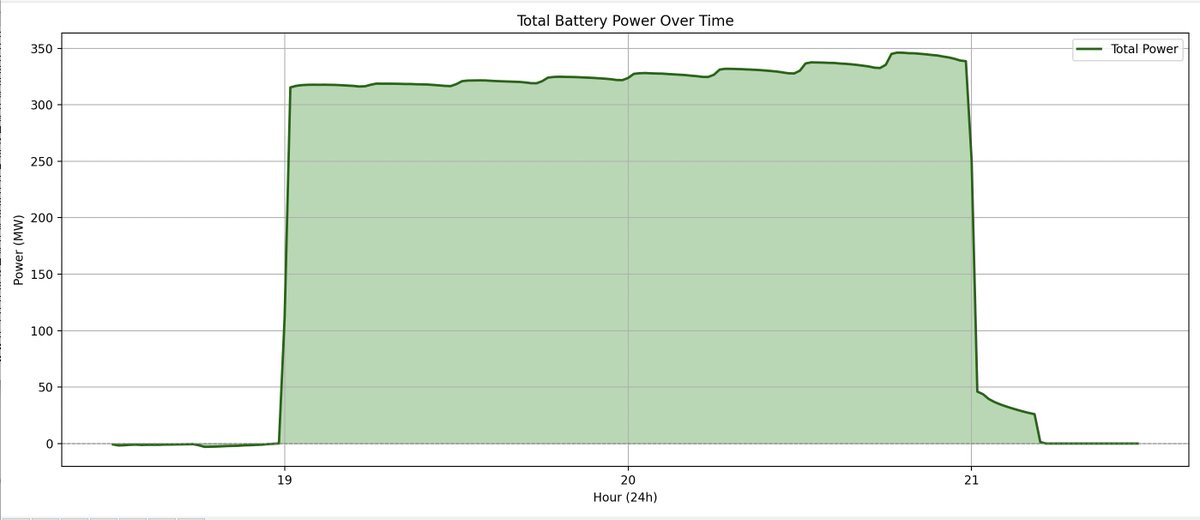Weekly Dose of Optimism #150
AlphaGenome, NY Nuclear, Shrooms, NewLimit, Tesla VPP, Cuby
Hi friends 👋 ,
Happy Friday, welcome back to our 150th Weekly Dose of Optimism. Woah the big one-five-zero! That’s a lot of optimism. You may be asking yourself, “If these guys love optimism so much, why don’t they marry it?” Well, optimism is a mindset and you can’t marry a mindset, silly.
Speaking of marriage, many thanks for the well wishes on my marriage in Italy last week. Packy also appreciated the well wishes, but he has been happily married for 8 years :) A quick editorial note: assume I (Dan) am writing this entire Weekly Dose and Packy is editing, unless it is otherwise noted that Packy is writing.
Let’s get to it.
Today’s Weekly Dose is brought to you by … Plaid
Money is more than math. It’s emotion, identity, control, and, increasingly, technology. And if you want to build the future of finance, you need to understand how people feel about their money just as much as how they spend it.
That’s exactly what Plaid’s new 2025 Consumer Survey Report digs into. They surveyed 2,000 consumers for unbiased insights on how they engage with financial services.
This quick, free guide peels back the curtain on the biggest trends on how consumers view banking, payments, credit, fraud, and investing in 2025, and walks you through some actionable insights like…
56% of crypto investors hold 25–75% of assets in digital currencies
30% of consumers trust neobanks, but only 13% use them
60% of consumers said they would share their financial data for enhanced security measures
If you’re a founder, investor, or operator building anything in or around financial services, this report is a fast, free way to get inside the mind of the modern money user (all of us).
(1) AlphaGenome: AI for better understanding the genome
From Google DeepMind
Today, we introduce AlphaGenome, a new artificial intelligence (AI) tool that more comprehensively and accurately predicts how single variants or mutations in human DNA sequences impact a wide range of biological processes regulating genes.
DeepMind released AlphaGenome, a powerful new model that makes gene regulation computable. It takes in up to 1 million DNA letters at a time and predicts how those sequences control gene activity: where genes start and stop, how they’re spliced, how much RNA gets made, and how mutations might disrupt those processes. It’s the first model to combine long-range genomic context with single-base precision at scale, allowing it to capture the complex regulatory choreography that drives cellular behavior.
Until now, the non-coding genome, 98% of our DNA, has mostly been a black box. We knew it mattered, especially in complex traits and diseases, but lacked tools to decode its function. Most genetic studies focused on the 2% that codes for proteins because it was easier to interpret. AlphaGenome changes that by modeling the full regulatory landscape, letting researchers probe how small mutations in “junk” DNA might trigger large biological effects. It can even identify regulatory fingerprints of diseases and test hypotheses about rare variants in seconds.
This is the AlphaFold (protein structure) moment for gene regulation, a leap from static snapshots to dynamic, testable predictions. Biology moves from observation to computation, and eventually, to control. The implications span from precision medicine to synthetic biology to rewriting our understanding of what DNA actually does.
Google DeepMind continues to impress on the important stuff!
(2) New York to Build One of First U.S. Nuclear-Power Plants in Generation
Ryan Dezember and Jennifer Hiller for The Wall Street Journal
New York intends to build a large nuclear-power facility, the first major new U.S. plant undertaken in more than 15 years and a big test of President Trump’s promise to expedite permitting for such projects.
Volatile week for our beloved New York. The same week that the City nominated a Democratic Socialist with little-to-no track record as the Democratic candidate for mayor, the Governor unveiled plans to make New York a leader in the nuclear energy movement. You win some, you lose some I guess.
Governor Kathy Hochul announced plans to build a new nuclear power plant, the first major one in the U.S. in over 15 years, as part of her plan to push secure, clean, reliable energy and avoid past mistakes like closing Indian Point (thanks RFK Jr.!) without a backup. The plant will add at least 1 gigawatt of capacity and is being spearheaded by the state’s Power Authority, which may partner with private firms.
New York currently has three active plants — Nine Mile Point, FitzPatrick, and Ginna — located along Lake Ontario and operated by Constellation Energy. Collectively, they provide approximately 3.4 gigawatts of capacity, supplying about 20% of the state's electricity and 42% of its carbon-free power. This planned 1 additional gigawatt won’t fully replace Indian Point’s contribution, but will increase the state’s nuclear generation by about 30%.
The new plant, which will likely be located in Upstate New York, will take 7-10 years to build and anywhere from $6-$30B to complete depending on factors like reactor design, permitting, and financing. If it’s $30B - 2x the $/GW of the already over budget Vogtle - we’re in trouble!
But we’re… optimistic. As we’ve discussed at length, building nuclear plants in the U.S. has not historically been a streamlined or predictable process. New regulations from the Trump Administration are designed to help this, with more efficient regulatory processes, expedited permits, and directives to make the NRC move a bit quicker. Maybe more importantly, the lessons learned at Vogtle (and the people who learned them) can be deployed to make New York’s build faster and cheaper. You gotta build things over and over to bring them down the learning curve.
Let’s hope we can get this plant live soon. The State is going to need a lot more clean energy to power its government grocery stores and free bus rides :)
(3) 1 psychedelic psilocybin dose eases depression for years, study reveals
Jane Palmer for LiveScience
Psilocybin, the main psychoactive ingredient in magic mushrooms, can alleviate depression for at least five years after a single dose, a new study finds.
I’m not really even surprised when new research like this comes out. It’s obviously great to see and helps to build psilocybin’s scientific foundation, but we’ve kind of known this for years. The research on psilocybin’s potential as an antidepressant is overwhelmingly positive. This new study found that a single dose of psilocybin combined with therapy led to full remission in 58% of patients with major depression within a month, 67% of whom remained in remission five years later.
Shrooms blow traditional depression treatments out of the water on both speed and durability. Good for people, bad for recurring pharma revenue!
Yet psilocybin is still not approved by the FDA. It’s received “breakthrough therapy” designation, and several companies are navigating the long regulatory slog to make it more widely available. One of those, Compass Pathways, just hit a milestone: its Phase 3 COMP005 trial met its primary endpoint, showing that a single 25 mg dose of its synthetic psilocybin (COMP360) significantly reduced depression symptoms in treatment-resistant patients versus placebo. This is the first-ever Phase 3 efficacy data for a classic psychedelic, and it’s a major leap toward approval, but also a reminder of how slowly this process moves, even when the data is this compelling.
The science is there. Now the question is whether the FDA is ready to catch up. Let’s get this in the hands of the people that desperately need it as soon as possible.
On a related note, our friend and recent Hyperlegible guest, Sari Azout, had this to say about her first mushroom journey:
From Jacob Kimmel on X
NewLimit, the longevity biotech startup founded by Coinbase’s Brian Armstrong, VC Blake Byers, and scientist Jacob Kimmel, released promising updates on its push to reverse aging. The company’s goal is to reprogram old cells, restoring their youthful function, rather than treating individual age-related diseases. Their first prototype drug, M0004, showed early signs of success in liver cells, helping them better withstand alcohol damage and regenerate after surgery.
To accelerate progress, NewLimit uses AI to design combinations of transcription factors, which are molecular switches that control which genes a cell turns on or off. These “TF sets” can effectively reboot old cells, nudging them back toward a younger state. So far, they've tested over 4,000 combinations in liver and immune cells, identifying several that restore key functions. A recent algorithmic breakthrough made this process 100x faster and 60% more productive, with AI now driving the majority of hypotheses tested.
Rather than treating aging’s downstream effects, NewLimit approaches aging as the root cause. It's still early, but the results suggest a future where aging itself becomes a targetable, and treatable, biological process.
Rooting for the lads! And hoping to root for them for hundreds of years.
From Telsa
Tonight, the Powerwall fleet in California dispatched 345MW to the grid during a Virtual Power Plant event, reducing the need for fossil-fueled peaking plants.
What is Tesla? An EV company? A Robotaxi company? A Robot company? A power company?
Yes.
Tesla is potentially one of the most important energy companies of the future due to its mass distribution of Powerwalls. And earlier this week, it displayed that network’s power and potential.
On Wednesday, Tesla’s Virtual Power Plant (VPP) in California dispatched 345 megawatts of stored energy from thousands of Powerwall home batteries to the grid. This was triggered during a period of high electricity demand to help stabilize the grid and avoid the use of fossil-fuel peaker plants. The coordinated discharge had a measurable effect: there was a visible drop in load, and electricity prices fell by 30–40%. Meaning it worked, big time.
Tesla’s Virtual Power Plant is one of those brilliant ideas that would likely stay a brilliant idea if not for the extraordinary execution skills of Elon. The VPP links distributed home batteries into a single energy resource that utilities can call on like any power plant, and homeowners are compensated for contributing the energy from their Powerwalls. Powerwall owners win, utility companies win, consumers of energy win, and because it’s all powered by solar, the environment wins. Win. Win. Win. Win. Oh yeah, and Tesla wins too. WIN.
Over here at Not Boring, we think that Base Power Company will win even bigger for reasons we discuss here, but we need all the battery winners we can get.
Let’s all be winners this weekend. Go gettem.
BONUS: Inside the Secret Factory Building Homes to End the Housing Crisis
Bricks & Bytes
Packy here. Earlier this morning, the team over at Bricks & Bytes published an awesome video on Not Boring Capital portfolio company, Cuby. They interviewed co-founder Aleks Gampel in New York City and then flew to Minsk to tour the factory and the houses the company is building with co-founder Aleh Kandrashou.
The only way to make housing cheaper is to build more of it.
This is a great inside look at how we’re going to do it.
Have a great weekend y’all.
Thanks to Plaid for sponsoring. We’ll be back in your inbox next week.
Thanks for reading,
Packy + Dan









Why don’t you do short video clips with each post?